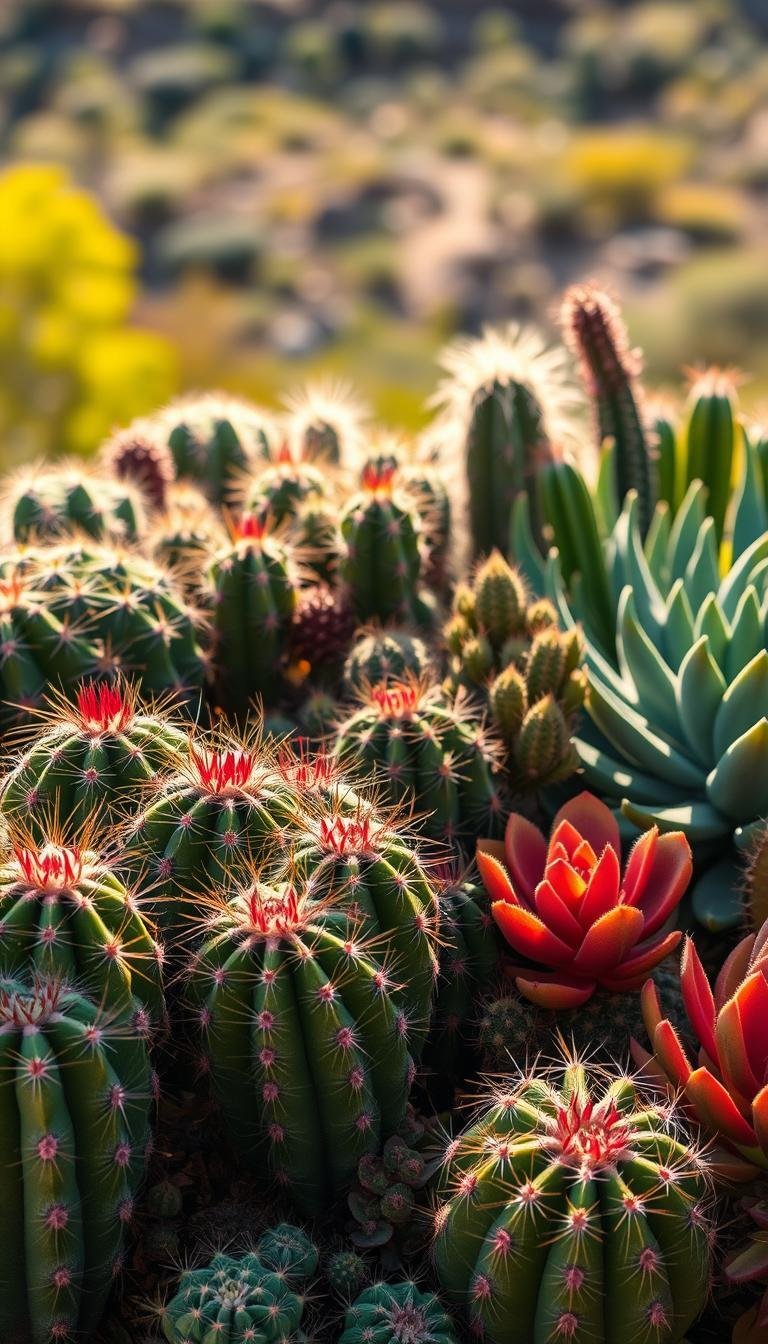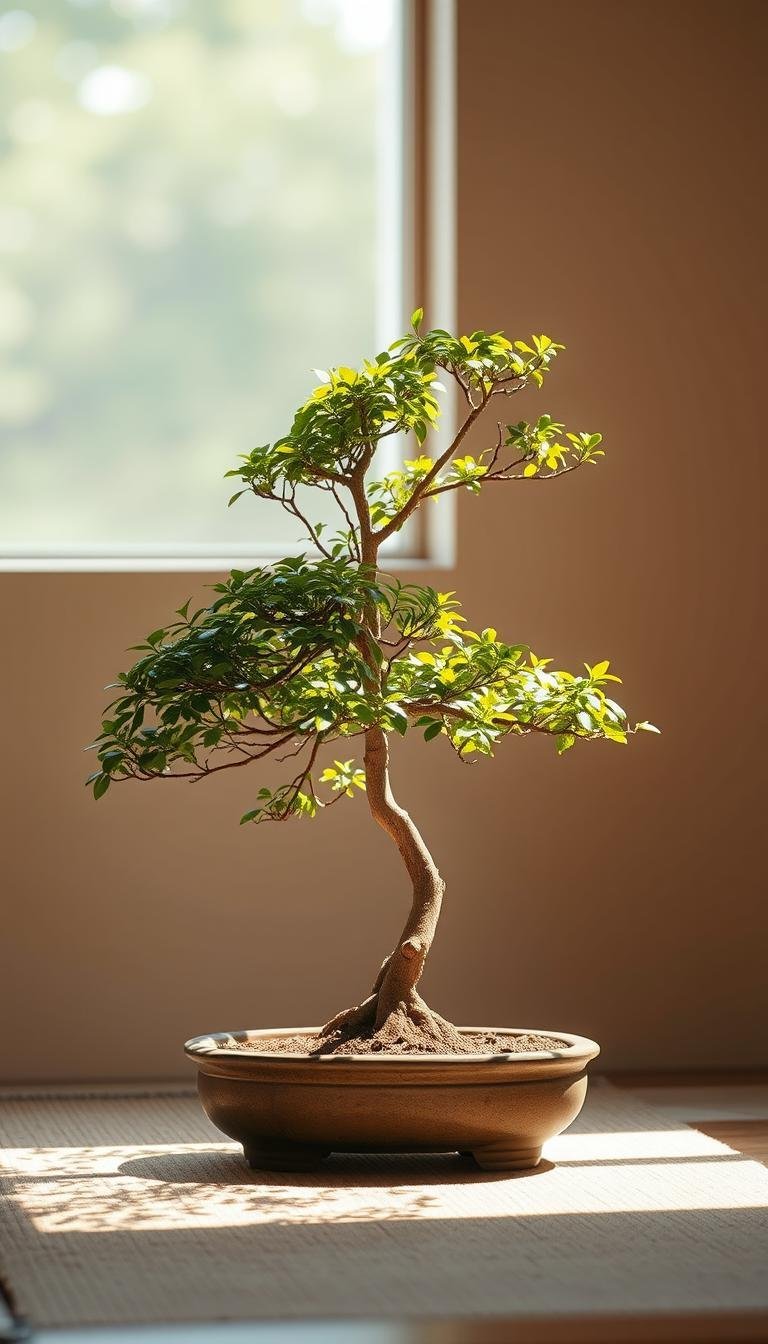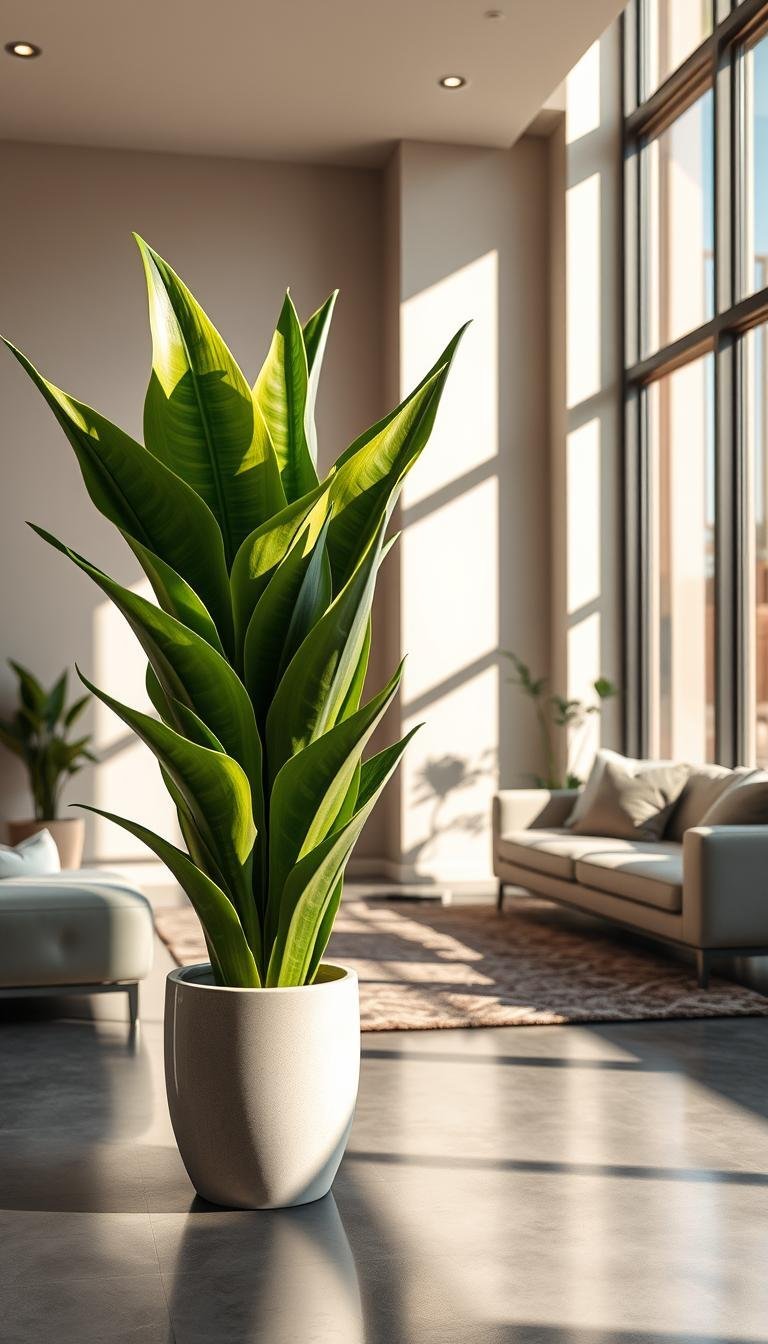This post may contain affiliate links. If you click and buy, we may earn a small commission at no extra cost to you. Learn more.
Welcome to your guide to growing happy cacti! This article is here to help you care for cactus and succulent plants, no matter your experience. You’ll learn how to water, light, and feed them correctly.
Find out simple steps to keep these desert plants alive and beautiful. You’ll learn about choosing the right soil and spotting problems early. With these tips, you can make your cacti thrive indoors or outdoors. Let’s start your journey to lush, healthy succulent plants today!
Contents
Understanding Cacti: A Brief Overview
Cacti are plants that can live in very dry places. Knowing what makes them special is key. Let’s look at their biology, diversity, and where they naturally live.
What Is a Cactus?
True cacti have areoles—special spots that grow spines, flowers, or branches. These spines keep them safe and help them lose less water. Their thick stems hold water, helping them survive in dry places.
Types of Cacti You Might Love
Cacti come in all sizes, from small to very tall. Here are some popular cactus varieties for everyone:
- Saguaro: This giant cactus can grow up to 50 feet tall, found in the Sonoran Desert.
- Prickly Pear: Its edible pads and bright flowers make it a favorite in gardens.
- Rebutia: These are small and colorful, great for tiny spaces.

The Natural Habitat of Cacti
Cacti live in deserts but also in grasslands or high places. Their roots spread out to catch rain fast. They grow best in hot days and cool nights. Knowing this helps us care for them indoors or outdoors.
Essential Cactus Care Tips
Learning to care for cacti starts with three main steps: watering, soil, and light. Let’s explore each to ensure your indoor cactus flourishes.

Proper Watering Techniques
Watering is the first step in cactus care. Don’t water every day. Most indoor cacti need infrequent, deep watering. Use the “soak and dry” method: water until liquid drains, then wait until the soil is dry before watering again.
In winter, water less because growth slows. Remember, overwatering can be deadly. It’s better to water less.
- Check soil moisture with a finger test
- Use pots with drainage holes
- Water every 2-6 weeks depending on climate
Best Soil Types for Cacti
Soil that drains well is key for indoor cacti. Mix 1 part potting soil with 1 part perlite and 1 part coarse sand. Store-bought mixes also work, but check if they drain well.
Avoid dense soils that hold moisture. Root rot loves wet conditions.
Ideal Lighting Conditions
Indoor cacti need 4-6 hours of bright light each day. Place them near south- or east-facing windows. Rotate them weekly for balanced growth.
Most cacti love sunlight. If light is limited, use LED grow lights.
“More light equals better flowering,” say experts at the Cactus Society of America.
Follow these tips with patience. Watch how your plant responds and adjust as needed. Healthy roots and vibrant colors mean you’re doing well.
Repotting Your Cactus: When and How
Repotting might seem scary, but it’s key for your cactus’s health. Knowing when and how to repot ensures your plant grows well. Let’s go over the steps and signs to watch for.

“Repotting gives cacti the space and nutrients they need to grow strong.” – National Gardening Association
Signs Your Cactus Needs Repotting
- Roots poking through drainage holes or soil surface
- Slow or no growth over several seasons
- Soil drying out faster than usual
Step-by-Step Repotting Guide
- Choose a pot 1–2 inches wider than the current one. Use breathable terra cotta or ceramic.
- Prepare cactus potting soil mixed with coarse sand or perlite for drainage.
- Gently tip the plant out of its pot. Inspect roots for rot or damage, trimming affected areas.
- Place in the new container, filling gaps with fresh cactus potting soil to secure it.
- Water sparingly for 1–2 weeks to let roots settle.
Wait until spring for best results. Avoid over-potting—size up gradually. Let soil dry completely before watering again. A well-repotted cactus can bloom and grow healthily for years.
Common Cactus Pests and Diseases
Cactus plants, despite their tough look, face threats from pests and diseases. Spotting trouble early is key to protect your collection. Let’s explore how to spot trouble and act fast.

Identifying Common Pests
Look for these culprits:
- Mealybugs: Soft, white cotton-like clusters on stems or leaves.
- Spider mites: Tiny red or brown dots causing yellow speckles and webbing.
- Scale insects: Small brown bumps that drain sap, leaving sticky residue.
- Fungal infections: Dark spots, mushy stems, or rot at soil level.
Effective Treatments for Infestations
Act with these proven solutions:
- Isolate infected plants immediately to prevent spread.
- For pests: Wipe mealybugs with alcohol-soaked cotton swabs. Spray neem oil or insecticidal soap for mites and scale.
- Fungal issues? Trim rotted parts with sterilized tools and repot in fresh, dry soil.
- Prevent future problems by wiping leaves monthly and avoiding overwatering.
“Healthy roots and airflow are the first defenses,” says Dr. Emily Green, a desert plant specialist. “Inspect new cactus plants before adding them to your collection.”
Regular checks and quick action keep cactus plants thriving. Stay vigilant and protect your garden’s health!
Fertilizing Your Cactus: Best Practices
Desert cacti may seem tough, but they need nutrients to grow well. The right fertilization helps them stay healthy without being too much work. Here’s how to give your plants the nutrients they need without overdoing it.

Choosing the Right Fertilizer
Choose fertilizers made for cacti or succulents. Look for a mix with less nitrogen and more phosphorus. This helps with root and flower growth. Espoma Cactus Food or Miracle-Gro Cactus Food are good choices. Or, you can use diluted fish emulsion or houseplant food at half strength.
When and How to Fertilize
Feed your desert cacti when they’re growing (spring to early summer). Don’t fertilize in fall and winter to avoid stressing them. Here’s how to fertilize:
- Dilute the fertilizer to ¼ of the recommended amount
- Water the soil first to prevent root burn
- Apply every 4-6 weeks when they’re growing
“A light hand with fertilizer ensures desert cacti stay true to their hardy nature.” – Desert Botanical Garden, Phoenix
Watch for yellowing stems (too much fertilizer) or slow growth (not enough). Adjust the amount as needed. A well-fed desert cactus will grow strong and bloom beautifully in spring.
Cactus Propagation Methods
Expanding your collection of cactus plants and succulent plants is easier than you think. Propagation lets you grow new plants from existing ones. This saves money and shares your green thumb passion. Whether you’re a novice or seasoned gardener, these methods work for most species.

Seed Propagation 101
Start with fresh seeds from reputable nurseries. Follow these steps:
- Stratify seeds by chilling them in moist soil for 2-4 weeks to mimic natural conditions.
- Sow seeds in small pots with sandy, well-draining soil. Cover trays with plastic wrap to retain humidity.
- Keep soil moist but not soggy. Germination can take weeks—be patient! Place under grow lights for 14 hours daily.
Offsets and Cuttings
For instant results, use offsets (baby plants) or stem cuttings:
- Offsets: Gently twist or cut pups from the parent plant. Let calluses form on cuts for 2-3 days before planting in cactus soil.
- Cuttings: Use sterilized shears to cut stems at a diagonal. Let dry for 1-2 weeks until a hard callus forms. Plant in moist sand; roots appear in 4-6 weeks.
Always use clean tools to prevent rot. Label containers with dates and species names. Overwatering is a common mistake—let soil dry completely between waterings. Soon, your collection will thrive, and you’ll have extra succulent plants to gift friends! 🌵
Seasonal Cactus Care
Indoor cacti do best when their care matches nature’s cycles. Changing care with the seasons helps them stay healthy and bloom well. Here’s how to adjust for each season.
Adjusting Care for Different Seasons
In spring and summer, they need more light and a bit more water as they grow. Mist their pots monthly during warm months to mimic rain. In fall, water less, and stop in winter when they’re dormant.
- Spring: Water every 2-3 weeks after soil dries
- Summer: Provide 4-6 hours of indirect sunlight daily
- Fall: Reduce watering to once a month
- Winter: Suspend watering entirely for most species
Winter Care Tips for Cacti
Winter is a time for rest. Keep your cacti in cool rooms, between 40-50°F (4-10°C). Don’t put them near drafts or heating vents. If it’s too dark, use grow lights.
“Dormancy isn’t hibernation—it’s a survival strategy to conserve resources for spring growth.”
Watch out for frost-sensitive types like Echinopsis. They should stay above 50°F. Start watering again when new growth shows up in late winter.
Troubleshooting Cactus Issues
Even with the right cactus care tips, plants can get stressed. Spotting these signs early can save your cactus. Let’s look at two main issues and how to fix them.
Yellowing or Wilting Leaves
Yellow patches or droopy stems mean trouble. Common reasons include:
- Poor drainage causing root rot
- Extreme temperature changes
- Too little light for too long
First, check if the soil is too wet. If it is, repot the cactus in fresh, dry soil. Move it to a brighter spot but avoid direct sun at first. Start watering again only when the soil is completely dry.
Signs of Overwatering
Overwatering is a big problem. Look for:
- Soft, clear stem bases
- Black or brown spots spreading up
- Cracked soil with mold
If you catch it early, carefully remove the plant from its pot. Cut off mushy roots with clean scissors. Let the roots air-dry for 24-48 hours before replanting in cactus mix. Cut watering in half for at least two months.
Regularly check your cactus with these cactus care tips. Small changes can make a big difference. Act quickly when you see changes—your cactus will appreciate it!
Fun Facts About Cacti
Cacti are more than just tough plants. They have deep roots in cultures and ecosystems. Their stories go beyond simple care.
Cultural Significance of Cacti
Desert cacti have inspired many traditions. In the American Southwest, Native American tribes use the saguaro in rituals. Its fruit is also a food source.
Today, cacti like prickly pear are found in food and skincare. In Mexico, the peyote cactus is sacred. Its image is seen in art and textiles globally. These plants symbolize strength, linking us to dry lands and our heritage.
Unique Cacti Around the World
Cacti show nature’s endless creativity. The Mammillaria elongata cristata looks like a brain and grows in wild shapes. The slow-growing Ariocarpus is a favorite among collectors.
The saguaro, found in Sonoran deserts, can live over 200 years. From Africa’s golden barrel cactus to South America’s Rhipsalis, they adapt to survive. Rare types like the Peruvian apple cactus add beauty to gardens.
To bring you cozy inspiration more efficiently, we sometimes use AI to assist in content creation — but every word and idea is carefully shaped by our team. See our AI Disclosure for more info.







